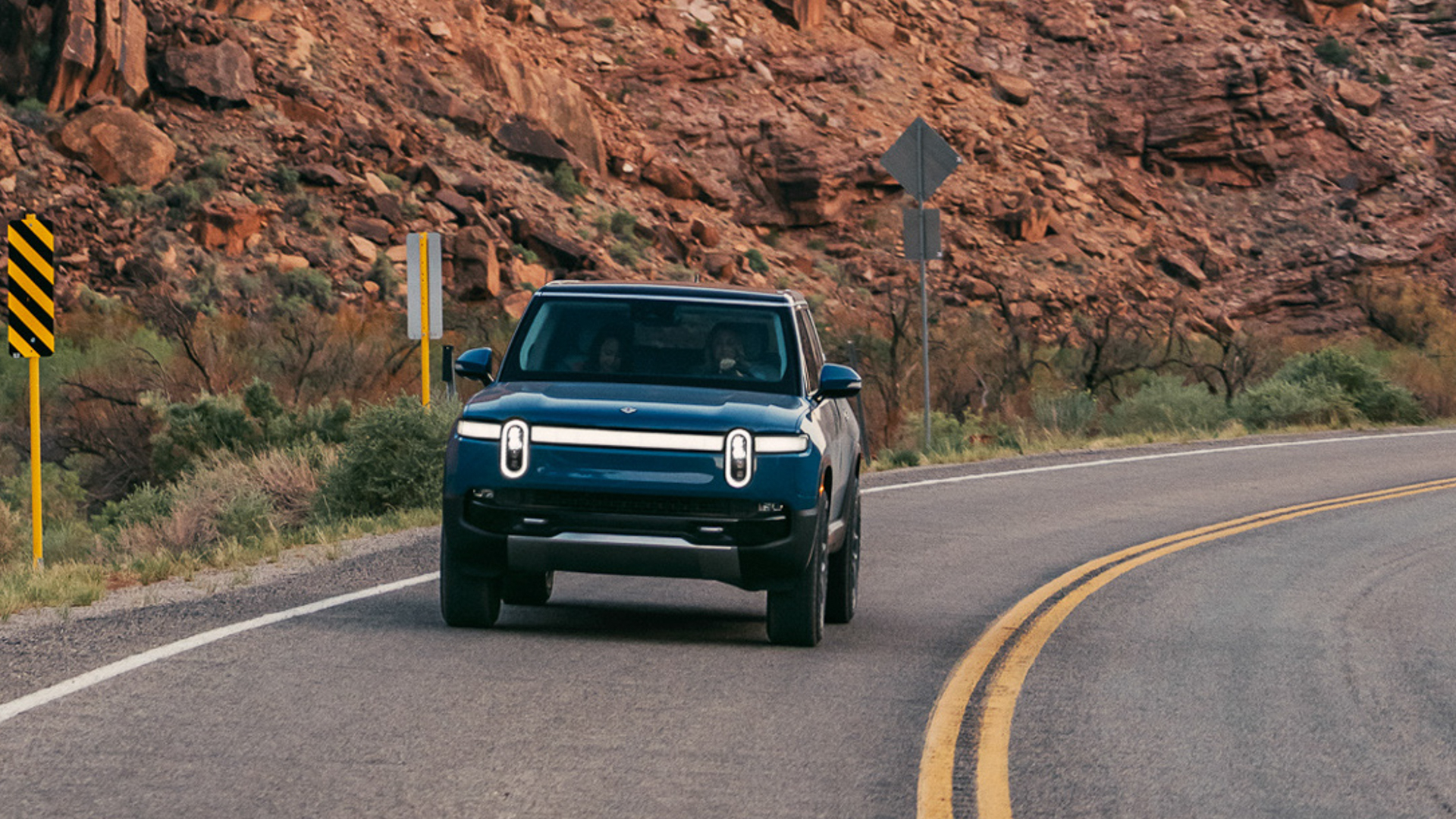

There are countless videos of people experimenting with slamming their car in park while driving on the highway, usually in an attempt to kill a beater car spectacularly. But what happens if you do that in an electric car? Can you “slam” a car into park if it doesn’t have a traditional transmission?
Rivian R1T owner Daniel Goldburg recently discovered that if you hold down the park button in the electric pickup, it starts drastically slowing down to a stop. In a post to a Rivian owners Facebook group, Goldburg asked if that was normal and, as it turns out, yes it is. It’s actually an emergency brake function designed to help the Rivian come to a stop if the brake pedal suddenly decides to call it quits or if there’s a medical emergency with an incapacitated driver and passengers need to stop the car.
Rivian isn’t the only electric brand to have that sort of function and other EVs mostly work the same way. Press the “P” button while driving, and nothing happens except that the car will likely give you a prompt on the screen, along with some sort of noise, indicating you’ve done something naughty and to cut it out. However, if you hold the “P” button in most EVs, they will come to an emergency stop. However, not every EV uses the same method of emergency braking.

A former Chevy Bolt engineer took to Reddit a few years ago to explain how its system works. Like most EVs, the Bolt has a single-speed transmission for its electric motor. Except its transmission also has a traditional parking pawl that engages when you park the car, just like a combustion engine car. If you repeatedly press the “P” button in a Bolt, it will engage the pawl, which will slow the car until it stops.
What is a parking pawl? It’s the spring-loaded parking lever that stops the transmission’s output shaft and is found in almost every automatic transmission and many single-speed EV transmissions. It’s what keeps your car stopped when you put it in park. Because it’s spring-loaded and slots into gear on the output shaft, it will ratchet the car’s speed down to a safe stop if engaged while the output shaft is spinning. It’s not actually damaging to the transmission, though it’s likely not great for either the pawl or the output shaft. In an emergency, parking pawl durability isn’t of much concern.

Teslas are a bit different, though, because they don’t have traditional parking pawl in their electric drive units. Instead, Teslas rely on the electronic parking brake to clamp down on the back wheels. Like the Rivian, a single press of the park button only prompts the driver to quit doing that, but a hold will engage an emergency stop.
Porsche has a similar function in its Taycan and instructs drivers to only do it in case of a real emergency. I also tested the function in an Audi Q4 e-tron Sportback and a single press of the “P” button sounds a loud beep, with a gauge cluster warning message, saying “Parking Brake: Emergency Brake.” Holding the button for more than a second results in a full emergency stop with hazard lights flashing.
It would seem that, unlike in “Let’s see how we can break this” videos, you’re pretty safe if you accidentally press the park button in an EV while driving, regardless of speed. But taking it a step further, if you suddenly find yourself without a functioning brake pedal, holding the park button in some EVs while driving could save your life. Though, I don’t recommend trying that on the highway unless you’re in an emergency or if you want to get an up-close look at the hood ornament of the car behind you.
Got tips? Send ’em to tips@thedrive.com